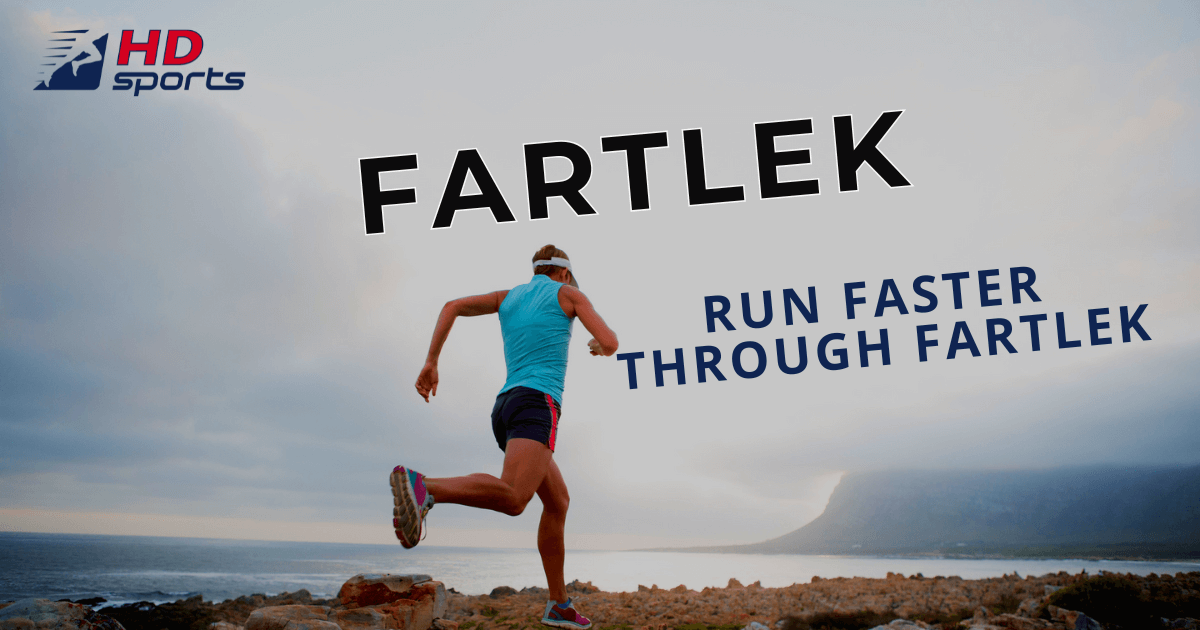Fartlek is the Swedish name for "driving game" or more precisely "speed game". This training is an important part of running.
Because probably almost every runner wants to improve their performance through running training. Through the classic basic runs at a comfortable endurance running pace, this will not work, at least not in the long term. Because only those who regularly give their body new stimuli will be able to improve steadily over the years.
An important cornerstone for the long-term improvement of running performance is the driving game, which among runners is also often referred to as "fartlek" (also outside Sweden). Although basic aerobic training takes up a large part of our training, every now and then we need to move on to more intensive training methods in order to constantly develop our bodies.
Fartlek simply explained
The fartlek is a mixed form of endurance running and interval training. Endurance running involves running at as constant a pace as possible over the entire distance, while interval training consists of a mix of high intensity (tempo runs) and recovery (trotting or walking between tempo runs). Fartlek, like interval training, also involves regular changes of pace, but in a different form.
Differences between fartlek and classic interval training
Classic interval training is, for example, 8 x 1 kilometers with a 3 minute trot break between the one kilometer tempo runs. The eight tempo runs are run at a pace that corresponds to the current best time over ten kilometers or minimally faster. In between, the runners are allowed to trot for three minutes. Due to the short breaks, fatigue increases as the training continues. After the last interval, the runner is quite exhausted, but should still be able to perform one or two intervals at this pace. In other words, interval training exhausts you a lot, but not completely.
The driving game, on the other hand, is the more flexible option in contrast to interval training. While in interval training the tempo runs should be done on a flat and beautiful track, the driving game can also be done off-road. In fartlek, there is no specific pace or distance requirement for the fast pace runs. Basically, you run a typical pace in the basic range 1 (65 - 80% of maximum heart rate), but in between there are always tempo runs. But you can run these as long and as fast as you like. The load intensity of the entire session should ultimately be above that of a base training session, but still a touch more comfortable than interval training.
So to summarize once again:
- Base training: Endurance run at a constant pace throughout.
- Interval training: alternating very fast pace and walking/trotting
- Driving game: Alternating between brisk pace and base pace.
This means that the discrepancy between the tempo changes is much smaller in the driving game than in interval training.
Getting faster through fartlek training
How Eliud Kipchoge trained for the first marathon in under 2 hours!
The driving game, in contrast to interval training, is also used in other sports apart from running or triathlon, because it is very easy to implement (no watch is needed for it) and yet very efficient. On the one hand, the basic aerobic range is improved by the basic tempo, on the other hand, the body is given new stimuli by the high tempo built in between, which in turn also results in an improvement in running economy.
Transition to interval training
A transitional form from the running game to interval training is the tempo change run. In this case, there are predefined specifications (i.e. length or duration of the tempo run), but here, as in the driving game, the discrepancy between the high and low tempo is lower than in interval training. A classic tempo run (can be readily defined as a driving game) among top African runners is a 60-minute run in which one minute is run fast and one minute is run in the base zone. This is a training method that is quite efficient, especially in preparation for the new season, and can also be imitated by amateur runners. For the beginning we recommend 30 minutes - 15 x 1 minute fast + 1 minute in the basic area.
Eliud Kipchoge also trusts in Fartlek
Eliud Kipchoge also knows that such forms of training are very efficient. The Kenyan, who in 2019 became the first person in the world to run the marathon in under two hours, completes a Fartlek workout once a week in his marathon preparation. Classic mileage sessions for Kipchoge are about 4 to 5 times 10 minutes fast and 2 minutes easy or 13 to 15 times 3 minutes fast and one minute easy.
The advantages of fartlek
- Easier to implement than interval training
- Psychologically less stressful than interval training (since there are no strict pace requirements)
- No technical instruments (watch, GPS) necessary, therefore especially for running beginners as the first more intensive form of training well suited
- Terrain independent
- Efficient training thanks to combination of endurance and tempo running
- Improvement of aerobic abilities
- Improvement of running economy
- Improvement of speed endurance
- Very diversified training variant
More for your training: What does VO2max mean and how do I improve it?




Kommentar schreiben